Just the Facts, Jack!
On April Fool’s Day an interesting article revealed the discovery of a hominid skeleton with a tail. At first, I thought it was a joke…dogs have tails, not people, but it was no joke. This would be the first time an archaic hominid was discovered with an external tail. A team of archeologists, anthropologists and geneticists discovered the new hominid in Siberia. They named it Homo Aprilensis, after the month it was discovered. Homo April had bred with Homo Sapiens (you guys) and genetic traces from this union have been found across Ukraine, Russia, Mongolia, Korea and China (could just call it Asia minor or whatever that region is called if only I knew).
What is really interesting is that all of you humedians grow tails in the womb. From about 30 days in-utero, for a limited time, a large tail can be seen until it recedes into a …you got it, tailbone! People are still born across the planet with tails, some even are fully functioning appendages. Imagine, if you will, kids having tails. No drink would ever be safe again and ERs would start having Starbucks kiosks in the waiting rooms because parents would be there so often due to car door and front door mishaps. As for adults with tails riding bicycles…forget it! Escalators…get out! The Kardashians would come out with a new line of tail fashions…HA! Maybe they would name it “Waggin’ Your Tails”.. nothing new right? And men would have one more type of body language for their partners to read to see if they really did clean the garage like they said they would.
Lots of working tails are out there in the world. There are tails that assist in climbing and gripping, balancing, and negotiating spaces. There are tails that defend and act as decoys. Tails are propulsion systems, fat reserves, warning systems and fly swatters. They even act as blankets for some animals! Bipeds don’t need tails anymore. When your ancestors had tails and traveled on all four legs, tails were used for balance. Now your tails, when they occur, are considered vestigial traits like your wisdom teeth, appendix, or even your tailbone. An interesting fact among humans born with tails is that the rate of males having the tail is two times greater than females. A human’s tail is composed of muscle, blood vessels, and nerves covered in skin. No bones, cartilage, or spinal materials included.
Now us doggies are different creatures altogether when it comes to our tails. Our tails are made up of a string of small bones like the spinal column, with muscle encasing each bone to allow for complicated movements, and oh boy do we take advantage of that! Our tails tell a story for those able to interpret. You humedians wear your hearts upon your sleeves but we doggies wear our hearts upon our tails. As pups, we don’t start wagging our tails until about 4 weeks of age. We’ve been napping and nursing and not quite ready to go on to the next step. Learning tail talk is imperative at this age as we are starting to play and interact with our pack. You will see month-old pups all wagging their tails as they stop their play and nestle into their Mom for a snack. Many dog experts think this is how they show the siblings they were just chewing on and making cry, that they are waving the truce flag during the meal. Dogs’ eyes are more attuned to movement than color or detail. The tail is the mode of so much communication.
There are several significant characteristics of tail talk:
- how the tail is held
- the movement of the tail including the energy of the wag
- whether the wag is more centered to the right or left can tell how a dog is currently experiencing life
Tail stance describes how the tail is held. To be successful you must learn your doggy friend’s neutral stance or how he holds his tail naturally. Some dog breeds have similar neutral stances. Examples are Beagles who tend to have a higher vertical tail stance which can signal aggression without that intent, as that is just their way (however they are so bossy and pushy already). Excuse my breed profiling, a Beagle just peed on me in the dog park last week…sheesh! Greyhounds and Whippets have a neutral stance in which the tail hugs under the belly. This could signal that they are submissive…could be why those suckers run so fast eh? It is not necessarily true that they are signaling submission. Now, let’s say I am newly arrived at the dog park, ready to play. A dog park is our version of a soap opera. So much going on, who’s sniffing whom, who is eyeballing that alluring beauty under the tree, who is guarding the water faucet and what idiot is just blatantly going around marking everything that moves or doesn’t …makes no matter. Get over yourself Chuck! Nobody cares! Chuck is the Beagle by the way. True story, I am standing alert with my ears and my tail up wagging. You know the look…I am alert and ready for action… just not sure what action is needed yet. Now I have stopped wagging and my body is still. Chuck is heading this way. I stand assessing the situation in this stance, giving myself the option of backing away if needed without a scuffle! Now let’s say Chuck picked up on my low-level disgust…it’s irritating but is it worth a fight? No thank you! So here comes Chuck and he approaches with his tail held high which gets me a bit tense! So, I know that Beagles do this by nature, but most dogs might take it wrong and besides he’s bigger than me, so I wonder what he’s thinking. I realize that Chuck is not releasing unusually generous amounts of pheromones (aka anal gland fluid), even though his tail is held high so maybe he’s just coming to check things out. I need to decide now how I will react. I could lower my tail to a submissive position, low or even under the belly. A submissive tail position signals many clues but especially it covers the anal gland, so pheromones aren’t being actively released. I could also raise my tail very high and actively release pheromones with the motion. I’m not really into escalating this encounter. Third choice would be holding my tail out straight behind me to signal curiosity, and that’s exactly what I do. I’m here to play today…who knows how I will feel tomorrow. Mr. Chuck Beagle trots up to me, does a little sniffaroo, and pretends to shift his focus onto the saucy number I had been getting sublime whiffs from. I turned my head towards where he is looking, and he pees on my back foot. He then runs off with his half mast tail wagging in earnest…meaning he was happy right now. That despicable fellow actually got a few butt wiggles in too. That is a happy, satisfied dog right there. Me..not so much. A good body shake and I’m ready to go check out the hot doggy under the tree.
If you’re interested in more information, the direction of tail wag is also a communication device. A dog with a tail wag more to the right is signaling a happy, confident attitude currently. A tail wag more to the left is saying the dog is feeling fear in a situation or just fearful by nature. Just like a human brain, the canine right brain controls the left side of the body and vice versa.
Doggy Tails also play key roles in our movement. They balance us like a tightrope walker using a balance pole. Dogs built for speed and needing to negotiate tight turns moving quickly use their tails to counter drifting during corners. Watch A Greyhound run! Labs have “otter” tails which empower them to swim efficiently. Many purebreds have tails bred to certain shapes to enhance the jobs they are used for.
Many dogs do not wag their tails when they are alone. No need to communicate if you are alone huh! Dogs with stumpy tails or no tails have a harder time communicating with other dogs. Sometimes that can lead to them not feeling comfortable with other dogs. They can learn to use ears and facial expressions to communicate.
So, the long and short of this tale is that dogs and people both have tails in their ancient history. Tails are amazing tools for so many creatures on the planet. Please don’t be jealous that most of you are not gifted with a bungling accoutrement! Humedians use their entire bodies to communicate. Some amusing examples you ask? How about your mother’s guilt inducing face, twerking, stress related body reactions when you get a letter from the IRS, everyone’s face at the DMV, and the 2-legged shuffle back when you see someone gagging or retching. Did you know that there are several universal behaviors that are shared between humans and animals? Revulsion is one. It is an evolutionary reaction encouraging animals to reject offensive foods that would cause harm. Sticking your tongue out in revulsion is shared among humans, dogs, and even birds. Yawning is another behavior that is contagious between species. Experiment by yawning with your doggy! The human faces of grief, happiness, and other emotions are shared with several other primates in the world. Wonder what I mean? Read the article.
Happy tails and tales for all!
2 Comments
Comments are closed.




This was an amazingly amusing article Jack! Packed full of of facts and sprinkled with your genuine amusement for life. Thank you for the great read.
Thank you! Jack does have an amazing sense of humor!